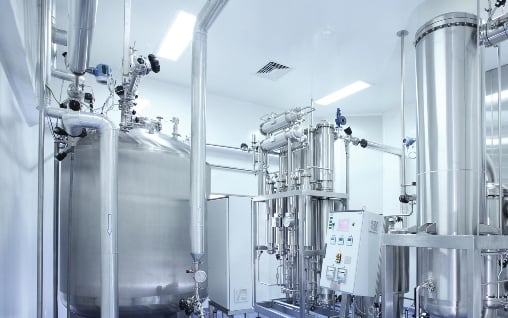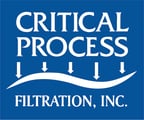One of the first questions many customers ask when evaluating filtration solutions is, “how many filters will I need?” Getting to the correct answer requires consideration of many factors.
Every filtration process is unique since no two fluids or list of filtration criteria are identical from company to company. Even contaminants in your product ingredients can vary among lots, so determining the number of filters begins with gathering information about the fluid and your required outcome. The steps necessary to arrive at the answer are not sequential, and you’ll find that the many factors under consideration usually overlap. This makes the case for having a filtration expert support your research efforts so you end up with the right number of filters.

Fluid characteristics
Chemical composition, viscosity at operating temperature, contaminant load, and fouling rate are the major components of a fluid to examine. They will be an important consideration in identifying the type of filter required. For example, when trying to minimize protein loss in the filtering of aqueous fluids, a Polyethersulfone (PES) membrane is chosen for its low protein binding factor. Alternately, in the case of solvents, a Nylon 6,6 membrane would be chosen for its high chemical resistance and high protein binding capabilities.
The level of filtration required determines the pore size. The amount of contamination and size of particulate are oftentimes measurable, making it possible to choose a micron rating for proper retention without prefouling. Depending on the fluid’s contamination load, prefiltration may be needed. That can be solved with additional filters or an integrated prefilter to lower the number of filters needed.
Identify the type of filter required
- Particle removal/clarification
- Bacteria reduction/control
- Sterile filtration
The size of the contaminants and required level of retention will dictate the filters' pore size. Microscopic elements such as certain species of bacteria mandate certain pore sizes. For example, 0.03 μm, 0.10 μm, and 0.22 μm meet the FDA definition of sterilizing grade filters.
Microbials used in testing/validating pore size performance are:
- 0.03 μm: Acholeplasma laidlawii
- 0.10 μm: Brevundimonas diminuta
- 0.22 μm: Brevundimonas diminuta
- 0.45 μm: Serratia marcescens
- 0.65 μm: Saccharomyces cerevisiae
Filter pore size: Nominal versus Absolute rating
As discussed above, particle sizes determine a filter’s pore size. In addition, the effectiveness of the filters' pore size is rated by manufacturers as either Nominal or Absolute, and your filtration goals will determine which type you need.
Nominal pore size ratings refer to the size of the particles (in microns) that are prevented from passing through the filter and the minimum percentage of how many particulates are blocked, which is typically 60-90%. Nominal refers to depth media ratings.
Absolute pore size ratings refer to the size of contaminants a filter can block at almost full efficiency (99.999%). These ratings are assigned to membrane filters.
.png?width=500&name=Nominal%20vs%20absolute%20filter%20flow%20with%20particles%20(2).png)
Materials of construction
This may be dictated by your process chemistry or temperature. It includes the media inside the filter and the materials used to construct the hardware of the filter, such as the cage, inner supports, and end caps.
Flow rate requirements
For a continuous process, this is self-explanatory - how much fluid is required to meet your process needs? In general, it is a good idea to target a flow somewhat higher than the minimum requirement to allow for possible variability in the feed fluid. For a batch process, this will depend on batch size and the required processing time. For example, if a 5000-liter batch needs to be filtered in 8 hours, the required flow rate can be calculated:
5000 liters / 8 hours = 625 liters/hour (10.4 liters/minute)
This target flow rate is then used to determine how many filters will be required.
Target filter change-out frequency
When your process has regularly scheduled filter changes, identifying the number of filters needed will be determined by choosing the right filter, flow rate, and volume produced in a specified timeframe. Filters are then sized to manage the stream. Take that number of filters and multiply them by the number of changes annually.
If target filter changeouts are determined by the filter’s lifespan and not predetermined dates, then the focus is on contamination levels, viscosity, flow rate, filter sizes, and cost. These factors can be tested and estimate life expectancy of the filters. Once actual filter life is realized, and assuming nothing changes in your process, you can plan for the number of filters needed in your process on a quarterly or annual basis.
System constraints
In addition to how fluids vary between applications and operations, process environments and equipment differences also play a role in determining the number of filters needed.
- Pressure capability in your system will impact flow rate and volume
- Space availability has a bearing on what types of housing can be utilized
- Piping, valves and other constrictions affecting overall pressure drops through the system influence filter sizing and quantities.
Compare the nominal flow rating for the chosen filter (gpm per psid - adjusted for viscosity) to your process requirements to get an approximation of how many filters will be required. For straightforward applications such as water filtration, or where it is known that the process fluid has a low level of contaminants, this may be sufficient to generate an accurate projection of how many filters will be required.
In other cases, it may require an evaluation of your system and possibly testing using your fluid to determine fouling rate and filter capacity before reaching a final answer.
Let’s look at a couple examples...
We’ll start with one of the straightforward applications.
 A customer was looking for particle removal from their plant water to protect downstream operations. There is a multimedia filter in place rated for 25 microns, but they need 10-micron filters to provide adequate water quality. They do not require 100% removal of 10-micron particles, so a nominal rated filter would work. Required flow rate is 50 gallons per minute, and the line pressure after the multimedia filter is >40 psi. The pressure downstream from the filter to be installed needs to be >25 psi.
A customer was looking for particle removal from their plant water to protect downstream operations. There is a multimedia filter in place rated for 25 microns, but they need 10-micron filters to provide adequate water quality. They do not require 100% removal of 10-micron particles, so a nominal rated filter would work. Required flow rate is 50 gallons per minute, and the line pressure after the multimedia filter is >40 psi. The pressure downstream from the filter to be installed needs to be >25 psi.
For this application, a 10-micron polypropylene depth filter (GPD Filter) was selected. Room temperature water flow for these filters is 7.5 gpm/psid per 10” cartridge. To start with a pressure differential of 1 psi, this requires seven 10" cartridge equivalents. After discussing options with the customer, they installed a Critical Process Filtration CIH42 housing (4-round x 20” cartridges), with 20” GPD 10-micron filters configured with 2-222 fittings and flat end caps. This provided a margin of safety to achieve the required flow rate in case of temperature or pressure fluctuations, and plenty of filter life between changeouts.
Now, let’s look at a slightly more complicated application.
A different customer was looking for bioburden control for a solution used as an ingredient in a pharmaceutical application. This was an aqueous solution with a viscosity of 3 - 5 centipoise at the operating temperature of 25°C. They needed to filter 1000-liter batches without stopping to change filters, and the target processing time was no more than eight hours. The solution particle load was unknown but was suspected to be on the high side and vary from batch to batch.
After a conference call between the customer’s process engineers and CPF Applications specialists, it was decided to have the customer submit a sample of their solution for testing. Based on the target of bioburden control (not complete sterility), the focus was on BPS Polyethersulfone filters. The solution provided had a viscosity of 5 centipoise - the high end of the reported range - so it was tested as a worst-case for flow and throughput. Running the solution through an 0.2-micron PES membrane without any prefiltration resulted in the filter clogging and an unacceptable projected filter life. Various prefilter possibilities were tested to determine if acceptable performance could be achieved by adding an integrated prefilter.
By conducting a series of Pmax tests (constant flow up to a predetermined pressure end-point), it was determined that incorporating an 0.5-micron high-capacity PES prefilter would give acceptable performance. From this testing, it was projected that a 10" filter would exhibit an initial flow rate of 0.31 gpm per psid (1.17 lpm) and process 412 liters.
Based on the 1000-liter batch size, three 10" filters would be required. At 1.17 lpm per 10 inches, the total flow would be 3.51 lpm, meaning 1000 liters could be filtered in just under five hours. After discussing these results with the customer, they chose a BPS Capsule Filter (0.2-micron PES with 0.5-micron prefilter, pre-sterilized, 30” capsule with 1-1/2” sanitary connections). Full-scale testing with this capsule configuration confirmed acceptable performance.
Note that the same series of testing can be used to predict the number of filters required for much larger batches and target flow rates. These types of applications will typically require a large multi-filter housing.
Summary and Conclusions
So, we see that answering the question “How many filters will I need” requires careful examination of the application and process characteristics. In many cases, the answer can be determined based on a basic process evaluation. In other cases, testing may be required to optimize the filter(s) to be used and identify how many are required. In either case, the Critical Process Filtration Applications team stands ready to help - we are more than product experts; we focus on the bigger picture of your filtration goals.
Are you in need of assistance in filter selection and sizing your system?
Critical Process Filtration offers over twenty years of experience as a mid-size manufacturer of process filters. We have an experienced Applications and Process Support staff that will perform any testing required to identify the right filters for your process, and how many will be required for your specific application. We can also assist in verification/validation of performance as required. For more information contact us today.
